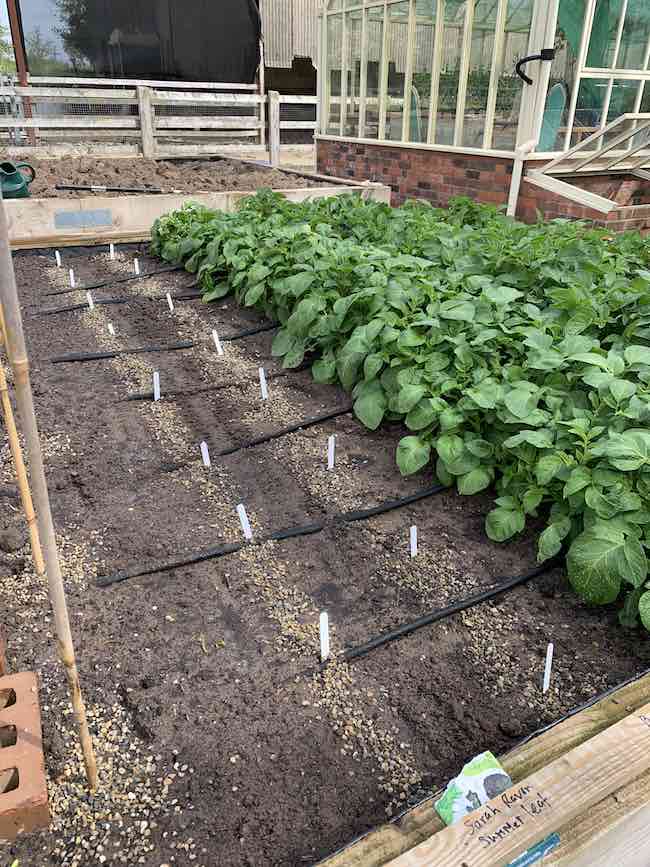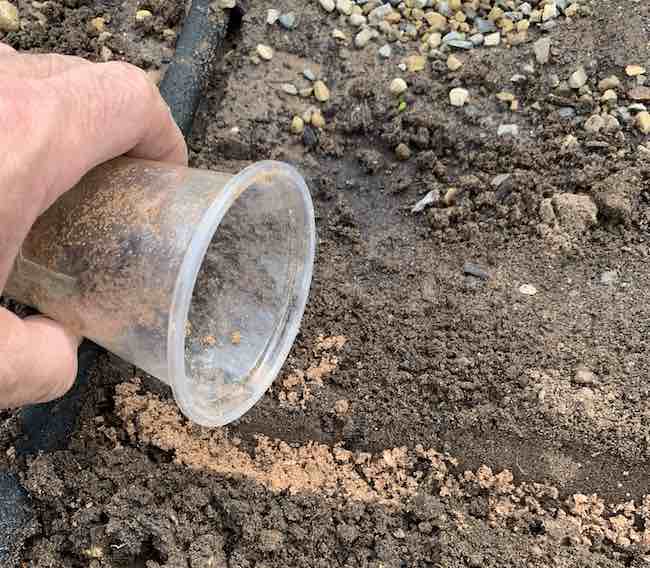Seed sowing for vegetables

The key to sowing vegetable seed in compost or open ground is to make sure the seed makes contact with the soil or compost and maintains the contact so it can access the water it needs for germination. The problem with a lot of the new eco composts is that they are so open in texture you need to constantly water to achieve a good germination rate.
The first key to seed sowing is to make sure that once sown they are well firmed in with the back of a rake or your hand and then watered well with a fine water spray from a watering can to remove any air pockets in the soil or compost around the seed.

Ideally, the seed needs to be sown twice the depth of the seed, although in some cases such as lettuce seed this is not practical so just sow so the seed is just covered.
Traditionally the seed drill is soil is created with the back of a rake pushing it into the soil to create a line, or in the case of peas and some salad leaves a 100mm wide shallow trench.
Try to space the seed out as it’s sown this will save on thinning out later. With very fine or small seeds it can be mixed with some grit or sharp sand and then sown to make it easier to handle.


After sowing rake the soil over the seeds, firm in and water well. It’s also a good idea to make the seed once sown with some labels and some sharp sand or horticultural grit over the seed to help you identify the seeds in rows as they germinate which makes the weeds easier to spot plus it helps to deter slugs and snails.
Labelling is a contact problem we have tried many methods but simply using some old batten wood from roofing and laying it along your vegetable bed and making the seed with a name is a simple and effective method The GardenAdvice team have used for a couple of of seasons now
